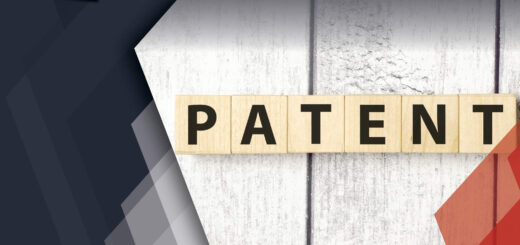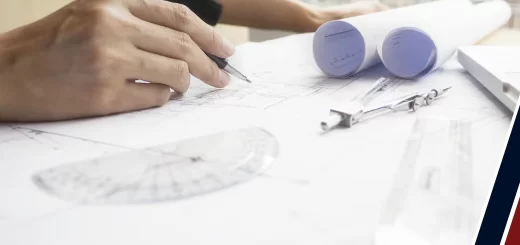Apple vs. Samsung: The Design Patent War Between Two Technology Giants
Nokia and Motorola dominated the mobile phone market before Apple and Samsung became the world’s largest smartphone manufacturers. In 2007, Apple took over the market with the launch of ‘iPhone’, a product that rapidly gained popularity due to its large and multi-touch user interface. Apple continued to dominate the smartphone market for years until Samsung introduced its Galaxy series in 2013 and emerged as a tough competitor. It was Samsung’s heavy advertising together with the distinct Android features that enabled Galaxy to overtake iPhone to become the most popular smartphone brand globally. This led to the beginning of a hostile competition and endless court battles between the two technology giants.
The following article discusses the design patent litigations and the battle of power between Apple and Samsung.
Table of Contents
The Beginning of Patent Lawsuits
Although filing lawsuits is a common strategy for Apple, its focus on Samsung is quite intense and recurrent. In 2011, when Apple was already embroiled with Motorola, it went after Samsung for tablet and smartphone designs. The first claim came in April and by August 2011, there were 19 continuing cases between Apple and Samsung in nine countries. The number of cases reached four dozen by mid-2012, wherein both firms claimed billions of dollars in damages. Each company won numerous decisions against the other during 2012-2015, quite often in contradictory rulings from German, American, Japanese, South Korean, Italian, French, British, Dutch, and Australian courts.
In 2012, Apple was victorious in an initial verdict in a case that targeted over one dozen Samsung phones. However, the appeals and counter lawsuit processes continued until 2014 when almost every target model was out of production. The actual damage, therefore, was not on the production line but in the massive legal costs incurred by the two companies.
However, there have been some production or distribution wins as well. For instance, in August 2011, a German court ordered an injunction on the Samsung Galaxy Tab 10.1 across the EU for infringing Apple’s interface patent. Though Samsung defended itself and the injunction was reduced to German markets, it was still a big win for Apple.
Timeline of the Apple vs. Samsung Legal Battle
- April 2011: In the actual legal action filed by Apple against Samsung, the former stated that Samsung had copied the design as well as the technology of Apple products.
- August 2011: Apple sued Samsung for patent infringement through its products, including the Samsung Galaxy Tab 10.1. In response, Samsung sued Apple over 3G patents and stated that iPhone such as iPhone 4, iPhone 4S, and iPad 2 infringed its patents.
- November 2011: In late 2011, Samsung was held victorious against Apple. A federal court in Australia lifted the preliminary sales injunction banning Galaxy tablet sales. A stay, however, was just another condition that stopped Samsung from selling the tablet till December 2, 2011.
- December 2011 – April 2012: Apple failed to block Samsung from selling some 4G-enabled products to US consumers. The iPhone manufacturer accused Samsung of “failing to comply” with the order set against it as part of the deal and “partial compliance” for not handing over everything that was agreed upon. US District Judge Lucy Koh, who presided over numerous Apple vs. Samsung cases, ordered both the parties to talk. The settlement talk dates were set for May 21-22 in San Francisco.
- May 2012: The US Court of Appeals for the Federal Circuit (CAFC) gave Apple the consent to look for a sales injunction on Samsung’s Galaxy Tab 10.1. The CAFC also stated that the sales prohibition must be imposed until a trial.
- June 2012: Following the appeals court ruling, US District Judge Lucy Koh had to reconsider the preparatory sales injunction against Samsung’s Galaxy Tab 10.1. Koh conveyed that Apple’s request to prevent Galaxy Tab sales in the US had to wait until the completion of court procedures. A higher appeals court was also required to formally give the jurisdiction back to her before the request could be admitted.
- July 2012: The dispute between the two firms which started in San Jose, California, was estimated to be resolved in four weeks. 10 individuals based in Santa Clara, California, were selected as the jury from a pool of 74.
- August 2012: Apple won over $1 billion against Samsung in a huge US court decision. It was one of the largest patent cases in decades and its finding was anticipated to have vast market ramifications. As per reports, the jury awarded $1.049 billion to Apple but declined Samsung’s counterclaims against the US tech giant.
The Outcome
Under the US patent laws, the harm of infringing a design patent does not agree with the impairment calculation for infringing a utility patent. Although a design patent owner may recuperate the infringer’s total profits, the utility patent owner may recuperate his/her lost profits or a fair royalty. This explains why the jury’s award based on infringement of a design patent was 100X the award based on infringement of a utility patent. In 2016, the Supreme Court reviewed this case and held that the net profit damages for infringing design patents need not be calculated based on the product sold to the consumer. Instead, it may be worked out based on only a constituent of that product.
Conclusion
The Apple vs. Samsung case not only reminds us of the importance of filing multiple design patents for protecting a new product’s look but also the significance of conducting a patent search. In the ongoing war between Apple and Samsung, no matter who emerges as the winner, the consumer will continue to lose unless the companies agree on having a healthy competition and offering their best products.
-Dhani, Adeena, Shubham, Rishabh (ICT Licensing) and the Editorial Team
Having Queries? Contact Us Now!
"*" indicates required fields




